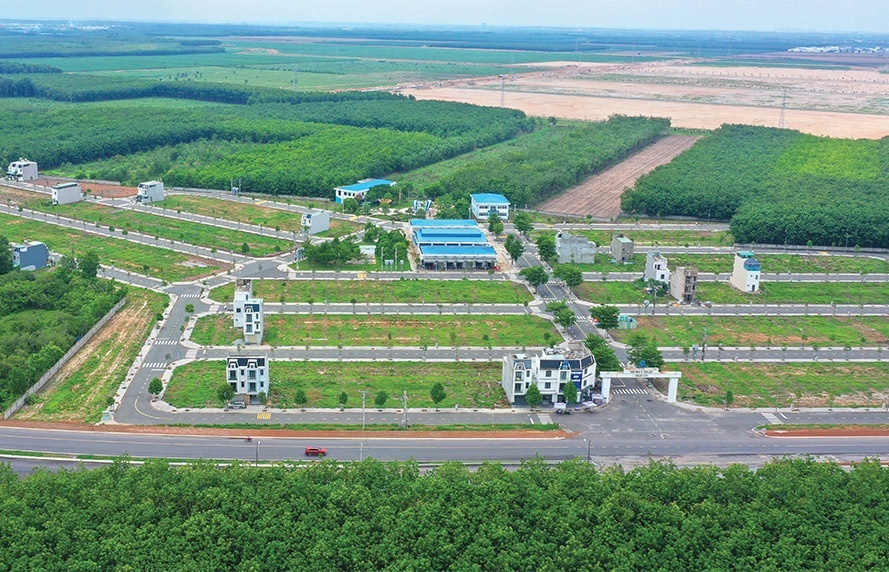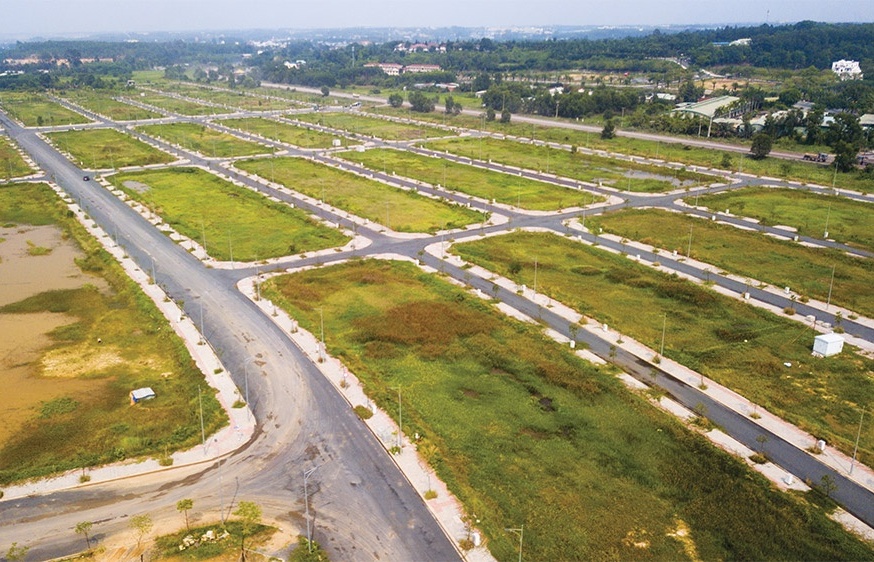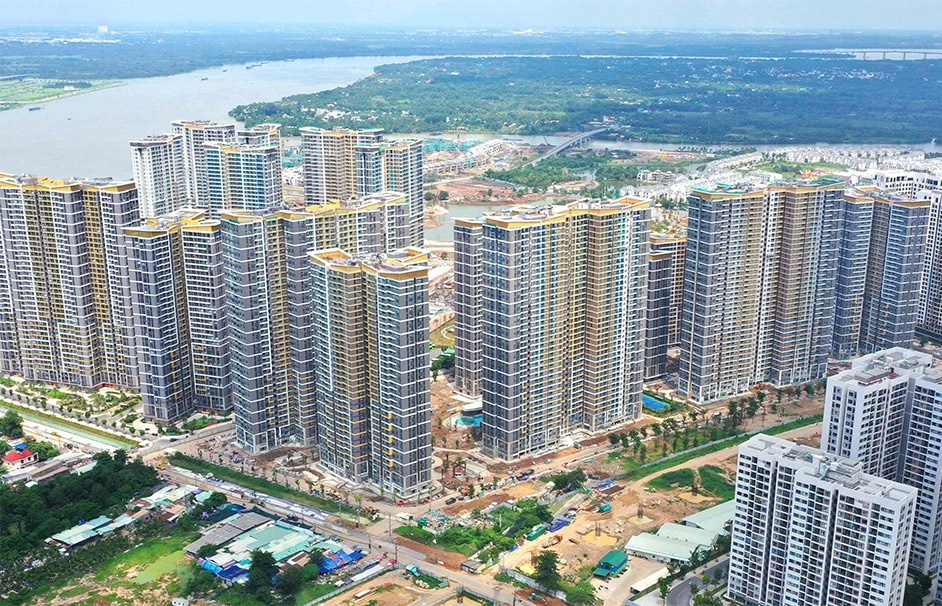Retail real estate set to prosper
 Retail is often regarded as the most exciting of all the real estate sectors, and requires specialised knowledge from sales and marketing, to site acquisition to management to ensure success.
Retail is often regarded as the most exciting of all the real estate sectors, and requires specialised knowledge from sales and marketing, to site acquisition to management to ensure success.
Vietnam has thrived on the back of good news concerning an increase in the supply of space, the prospect of new international retail tenants and increasing numbers of consumers, although slower than in previous years. Conversely, the sector has been plagued by reports of stores closing, restrictive regulations for foreign retailers and low consumer confidence. However, considering recent economic indicators generally pointing in the right direction, consumers are slowly regaining confidence and starting to spend again.
Turnover in retail sales services has seen robust growth of around 23 per cent over the last 10 years. However growth has slowed since 2008 as consumers have tightened their belts and tended to buy less, buy more frequently and buy where they can obtain more value for money. This in turn has affected retailers and slowed their growth plans and their ability to pay prime rents.
Tourism has remained a bright spot for Vietnam with 6.8 million international tourist arrivals in 2012. Although tourist revenues were approximately $5.6 billion in 2011 in Hanoi and Ho Chi Minh City combined, this is still far short of Thailand which received 22 million international visitor arrivals in 2012, with those visitors spending almost twice as much, showing that Vietnam still has some way to go before catching up with its neighbour.
By the end of 2013, retail supply of formal trade centres in Hanoi will stand at around one million square metres which is more than double Ho Chi Minh City’s 450,000sqm. Hanoi will continue to enjoy more supply through to 2014 as more projects come on line in Hanoi bringing the total to 1.5 million sqm by the end of 2014, while Ho Chi Minh City is due to have a little over 500,000sqm. As a result, rents and occupancy will remain firm in Ho Chi Minh City, while in Hanoi they are likely to come under pressure, especially in non central business districts (CBD) locations.
Although Vietnam benefits from having two major cities with a combined population of approximately 13 million, Hanoi has shown the most activity this year with the introduction of three new shopping centres: Trang Tien Plaza, Vincom Royal City Megamall and Vincom’s Times City Megamall. At least 27 new brands entered the Hanoi market by opening in these new shopping centres, compared to just six new brands arriving in Ho Chi Minh City. This made Hanoi one of the most active retail real estate markets in Asia in 2013.

Vietnam’s burgeoning 90 million population will offer massive potential for retail growth for the foreseeable futurePhoto: Le Toan
New developments in Hanoi in 2014 will include the opening of the first Lotte Mart at Mipec Tower in Tay Son Street in Dong Da district and the Lotte Department Store in Dao Tan Street in Ba Dinh district. In addition, Viglacera’s Thang Long Number One will open with 11,000sqm, in mid-2014.
New supply in Ho Chi Minh City during 2014 should see the opening of two new projects in District 2, the first of which should be Thao Dien Pearl’s 20,000sqm of gross leasable area (GLA) and Cantavil Premier with 30,000sqm of GLA, to be anchored by Parkson, Big C and Lotte Cinema. In addition two megamalls should open in 2014, both with hypermarkets as their anchor tenants, these being SC Vivo City (72,000sqm GLA) hosting CoopXtra in District 7 and Aeon Tan Phu Celedon Shopping Mall (75,500sqm GLA) which will be home to Aeon Hyper.
Many of these new shopping malls are developed by brand names familiar to Vietnamese customers, such as Vincom, SSG, Coopmart and Lotte, and will incorporate a hypermarket or at least a large supermarket into their tenant mix to drive traffic to their suburban locations.
Average asking rents in prime ground floor locations in the Hanoi CBD are approximately $90 per sqm per month, slightly lower than Ho Chi Minh City’s $95 per sqm per month. However, outside of the CBD, Hanoi rents are averaging $38 per sqm per month which is higher than Ho Chi Minh City at $26 per sqm per month for the same type of space.
However, one should note that Royal City, which is included in non-CBD rents, does not have a ground floor and therefore its first level of two basements was used as a comparison. In 2014 it is expected that due to limited supply in the Ho Chi Minh City’s CBD, rents will remain firm, whereas in non-CBD areas supply will increase. Coupled with limited foot traffic, rents will drop further. 2013 saw a trend of developers charging rents to tenants on a percentage of turnover, as opposed to fixed rents, in order to increase occupancy. This trend will remain in 2014 as supply continues to outstrip demand and limited tenants remain in the market for expansion.
In 2013, food and beverage (F&B) retailers have performed much better than speciality retailers, including fashion. This is evidenced by the number of new F&B retailers dominating the prime spaces in Ho Chi Minh City’s District 1 and paying higher rents than the speciality retailers. It was the opposite five years ago. New entrants such as Starbucks, Aunty Anne’s and Baskin Robbins, have stirred up the F&B market and the long-awaited new entrant McDonald’s is set to open in Ho Chi Minh City in 2014.
A noticeable trend in the Hanoi market is that the same tenants are moving around. For example, in the third quarter of 2013, 519 stores opened and 220 closed. 64 per cent of the new store openings were F&B and fashion, while 36 per cent of the stores that closed were fashion. Very few F&B outlets closed. From these figures, we can understand that tenants are relocating from weaker to stronger malls, or malls where they have the best chance of success. Hanoi is a good example of where more space has been created, rentals have dropped and tenants have been encouraged to expand.
With the change, or rather the drop in consumer confidence, consumer priorities have altered. Entertainment and dining out are no longer the prime priorities of Vietnamese consumers. They are more likely to spend their disposable income on education and healthcare products. This will affect the take-up of space in shopping centres in the short term, but in the long term F&B, groceries and entertainment will dominate consumer attention and take up the majority of space in the country’s malls.
In summary, foreign developers and retailers have confidence in the long term growth of Vietnam, especially in its 90 million, predominantly young population. A warming of government policy, especially the Economic Needs Test, will welcome retailers and instill confidence in investors to tap the under-served retail market here. However, Vietnamese developers and retailers will retain the competitive edge on account of their understanding of the local market, the speed with which they can get their product on the market, and their access to the best real estate. But it’s not all about quantity and speed, as the market develops and becomes more competitive, quality of design, tenant mix, marketing and management will play a much greater part.
What the stars mean:
★ Poor ★ ★ Promising ★★★ Good ★★★★ Very good ★★★★★ Exceptional
Latest News
More News
- Trump's trade policies could shape Vietnam's economic outlook: Dragon Capital (November 15, 2024 | 16:56)
- The One Destination partners with Singapore investor and institutional fund to build ESG real estate complex (November 11, 2024 | 10:32)
- Stabilising measures must sit alongside land price hikes (November 07, 2024 | 09:56)
- CapitaLand Development records strong bookings for Orchard Hill (November 07, 2024 | 08:19)
- Public transport and real estate: The rise of Transit Oriented Development (November 05, 2024 | 15:06)
- Funding flows to second-tier localities (November 03, 2024 | 15:24)
- Hanoi has long road to travel in becoming a smart city (November 03, 2024 | 15:00)
- Nam Long Group hands over keys to Akari City Phase 2 (October 30, 2024 | 18:29)
- KTG Industrial expands industrial footprint at Taitronics 2024 (October 29, 2024 | 14:46)
- Deal signed for sustainable development at Prodezi Eco-Industrial Park (October 26, 2024 | 10:02)
















 Mobile Version
Mobile Version